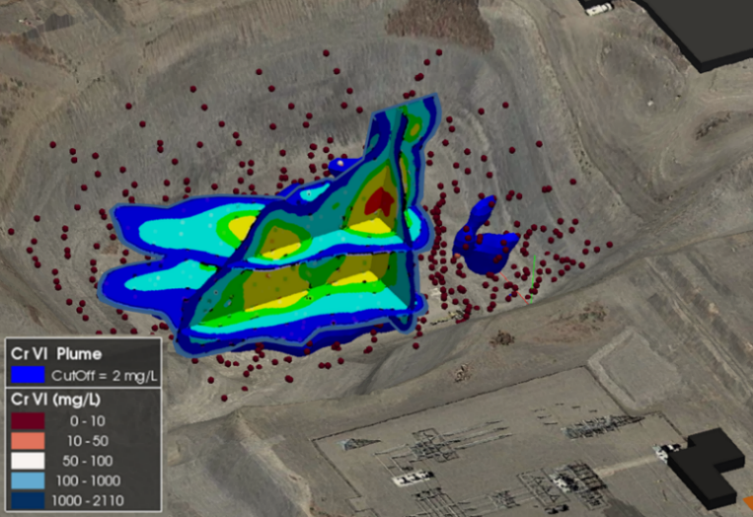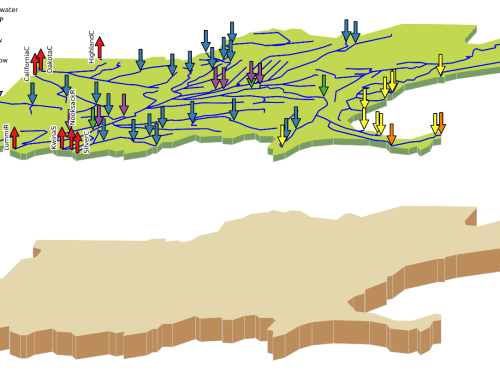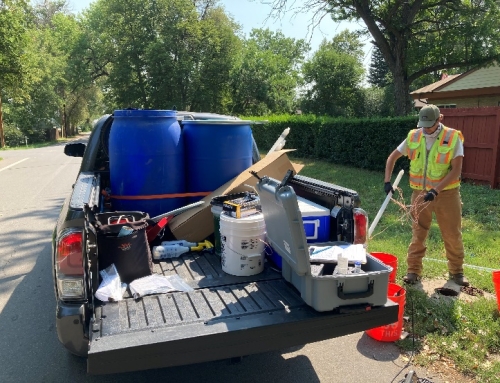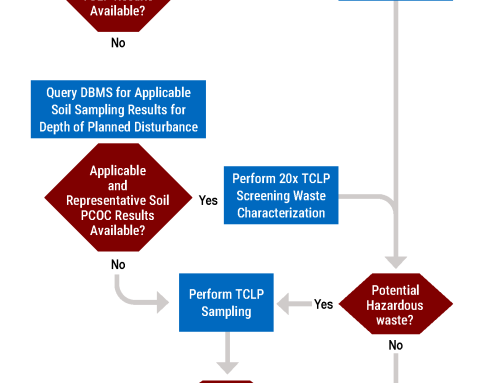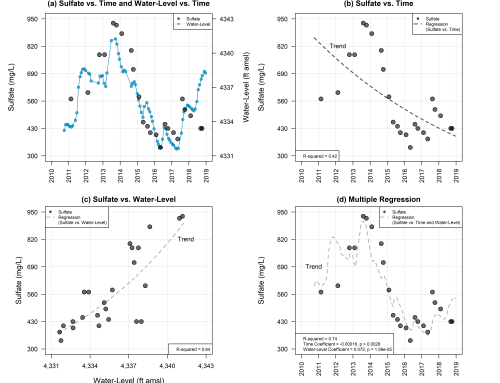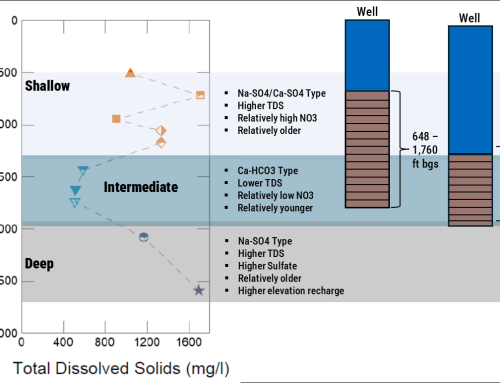The U.S. Department of Energy (DOE) Hanford Site transitioned over decades from a Manhattan Project mission to environmental assessment and cleanup. SSP&A was initially engaged to assess groundwater conditions and develop and apply models to design, evaluate, and optimize groundwater remedies for Comprehensive Environmental Response, Compensation, and Liability Act (CERCLA) operable units (OUs) across the Hanford Site.
Over a 16-year period SSP&A performed the following tasks:
- Developed a strategy to support the 200-ZP-1 Remedial Investigation/Feasibility Study (RI/FS), evaluating pump-and-treat (P&T) and monitored natural attenuation (MNA), with later modeling and assessment of the implemented remedy.
- Developed the original versions of the Central Plateau 100 Areas groundwater flow and contaminant transport models.
- Expanded the capabilities of MODFLOW, MODPATH, and MT3D for use at Hanford to design, optimize and evaluate remedies to meet cleanup objectives.
- Developed three-dimensional (3D) conceptual site models (CSMs) for Central Plateau and River Corridor OUs to underpin fate-and-transport (F&T) analyses for multiple regulatory programs.
- Developed a soil-to-groundwater screening model (SSM) framework to assess contributions to groundwater contamination from numerous waste and soil sources.
- Supported numerous DOE contractors in their use of SSP&A produced modeling and (geo-)statistical methods and codes.
- Evaluated the fate in soils and groundwater of dozens of contaminants including chlorinated solvents, metals, other inorganics, and radionuclides.
- Collaborated with Pacific Northwest National Laboratory (PNNL) to simulate co-precipitated chromate-calcite residual sources, including evaluation of laboratory and geochemical speciation data including energy dispersive spectrometry (EMPA-EDS); development of a PHREEQC geochemical model to represent rate-limiting processes on hexavalent chromium (Cr[VI]) F&T; calibration of the PHREEQC model to sequential batch leaching (SBLT) data; translation of the PHREEQC formulation into MT3D to simulate site-specific field-scale residual sources of Cr[VI].
SSP&A’s project team included technical leads in geochemistry, (geo-) statistics, CSM development, and modeling, as the project required expertise in geochemistry, model formulation, and programming.
Project Details
Highlights:
AEA Reporting
CERCLA Compliance
CERCLA Reporting
Collaboration with Pacific Northwest National Laboratory (PNNL)
Conceptual Site Model Development
CrVI Evaluation
Fate and Transport Analysis
Fate and Transport Modeling
Geochemical Analysis
Geochemical Modeling
Geostatistical Analysis
Pump-and-Treat Evaluation
RCRA Reporting
Remedial Investigation/Feasibility Study (RI/FS)
CERCLA Compliance
CERCLA Reporting
Collaboration with Pacific Northwest National Laboratory (PNNL)
Conceptual Site Model Development
CrVI Evaluation
Fate and Transport Analysis
Fate and Transport Modeling
Geochemical Analysis
Geochemical Modeling
Geostatistical Analysis
Pump-and-Treat Evaluation
RCRA Reporting
Remedial Investigation/Feasibility Study (RI/FS)

